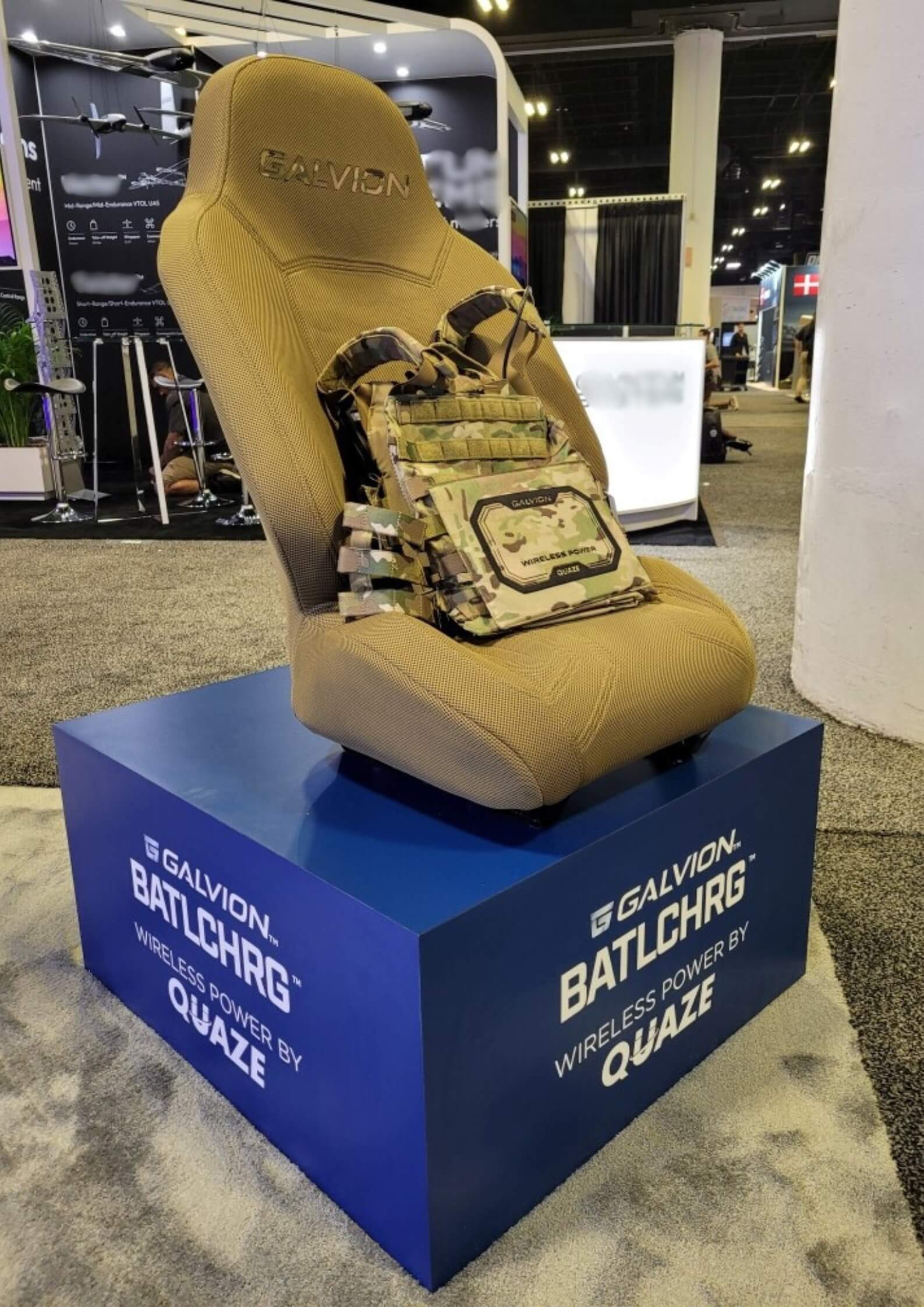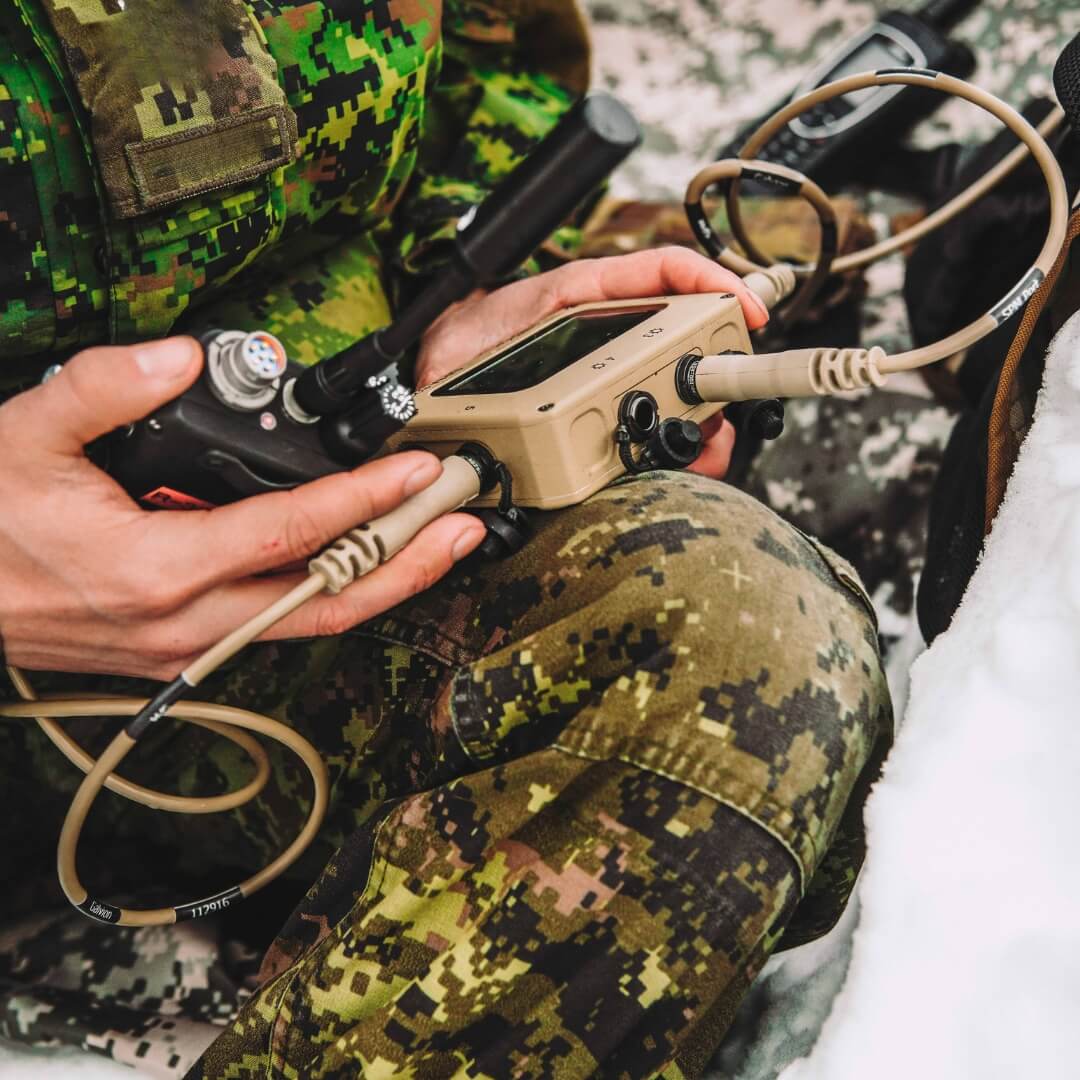The modern battlespace continues to grow in complexity, particularly for dismounted warfighters operating against highly capable and well-equipped adversaries at the tactical edge.
Whether tasked with counter-terrorism operations in remote and austere environments or engaging peer adversaries in dense urban environments, the modern warfighter must be suitably equipped to optimise lethality, mobility, connectivity and most importantly, survivability across the battlespace.
Galvion continues to focus on providing the right solutions for the right situations, Galvion has emerged as a market leader when it comes to satisfying the most important demand signals facing warfighters operating in even the most contested of environments.
According to the company’s Chief Revenue Officer, Ben Marklew, Galvion is focused on providing the modern warfighter with lightweight, integrated and connected tactical head systems and man-wearable, untethered and intelligent power and data solutions.
“The modern warfighter is more power hungry than ever so one of our main efforts at Galvion is to focus on the future and conduct the most up to date research and development to put the right equipment in the hands of the end users to generate real-time feedback to support product and spiral development,” Marklew explained.
Protecting the NATO warfighter
Following contract award in December 2022, in November 2023 Galvion completed its first major shipment of Batlskin Caiman combat helmet systems to NATO members Finland and Sweden as well as Norway as part of a NATO Support and Procurement Agency (NSPA) contract. A total of 80,000 units will be delivered to these three Nordic countries over an 18-month period. In addition, Galvion has received multiple other orders that to date, bring the total number of NSPA ordered Caiman helmets to NATO members to over 125,000.
This latest NSPA contract follows “extensive user trials” by special operations forces (SOF) and dismounted units across the Norwegian Armed Forces and illustrates how Galvion continues to work closely with its customer base to ensure it provides the most optimal solutions.
According to Norwegian Defence Materiel Agency (NDMA) officials, Norwegian units conducted “rigorous trials over an extended period and through multiple mission sets. The Caiman helmet was selected as the variant normally used by Special Forces and advanced conventional forces as it is focused on survivability and lethality and supports the integration of visual augmentation devices and communications.”
As Marklew continued to explain: “Caiman is a forward leaning design that can incorporate electronics, communications headsets, and other critical equipment, now and into the future.”
Fully adjustable and available in five sizes for maximum stability, the Caiman helmet is designed as a fully integrated and future-proofed solution, capable of accommodating a variety of accessories including night vision devices and helmet-mounted displays, strobes, tactical torchlights as well as other accessories including the TR2 respiratory mask (developed by strategic partner Ventus Respiratory Technologies) which protects the warfighter from inhaling dust and toxic particulates.
Galvion also continues to explore material developments to further enhance weight versus protection ratios in its family of tactical head systems as the modern warfighter looks to maximise mobility across the battlespace with minimal reduction in protection levels.
Empowering the Dismounted Warfighter
According to Marklew, the amount of data being processed at the edge means the modern warfighter must have access to power sources capable of supporting extended use of devices across the battlespace. These can include command and control, communications, computers and cyber solutions such as software defined radios, visual augmentation systems and other end user devices, he explained.
“Soldiers are more power hungry than ever before and at Galvion we provide the expertise in understanding how to utilise existing solutions to recharge devices more remotely and efficiently,” Marklew said before once again reinforcing the company’s focus on end user feedback.
At the annual SOF Week exhibition in Tampa, Florida on 7th May, Galvion unveiled its latest power recharging capabilities specifically designed to support the modern warfighter when conducting high tempo operations in any environment.
Co-developed with Quaze Technologies, the BATLCHRG™ systems demonstrated at SOF Week 2024, showed the BATLCHRG wireless charging capability in two battlefield scenarios: integrated into a vehicle seat and wall-mounted mat in a ready-room scenario. Both instances demonstrate that soldiers can charge multiple battery powered systems through the wireless power transfer system. The robust wireless solution utilizes a charging mat and receiver configuration that has excellent power transfer rates and efficiency, a broad position tolerance to account for movement and misalignment of surfaces, and functionality even in the harshest environments, proving efficient even when covered with water, snow, dirt, or dust.

Once the insert and receiving module come into close proximity, the insert draws power wirelessly from the receiving module to recharge devices in as little as 90 minutes, Marklew added.
BATLCHRG is already soliciting interest from the global SOF community. It can be used to recharge devices while on standby or on board any kind of vehicle, even when operating on the move. Examples include helicopters, rigid hull inflatable boats, tactical ground vehicles.
Other power solutions within Galvion’s inventory include Solo Pack I & II rechargeable Lithium-Ion batteries which can fit inside an M4 Magazine pouch and are capable of supporting up to 24-hour usage end user devices. Batteries can also be charged in the man-portable Mission Adaptive Charging Station (MAX 8) recharging case which can accommodate up to eight Li-Ion batteries including Solo Pack I and II.

Advancing Dismounted Warfighter Capabilities
Finally, customers are supported by Galvion’s Advanced Capabilities division which is tasked with identifying and developing emerging technologies across tactical head systems and power and data.
Describing the business unit as a “user-customer interface”, Marklew explained how Advanced Capabilities remains focused on the development of “low TRL” technology, bringing it up to TRL 5 or 6 before putting it in the hands of end users for evaluation.
Areas of interest include Machine Learning and Artificial Intelligence which continue to proliferate SOF and dismounted end user groups to support decision-making processes – a capability which will require increasing levels of power, Marklew advised.
“Machine learning is pushing more and more data to the end user for situation awareness, so Galvion is looking at how our tactical head solutions and power and data systems can help manage this more efficiently and effectively,” Marklew concluded.















